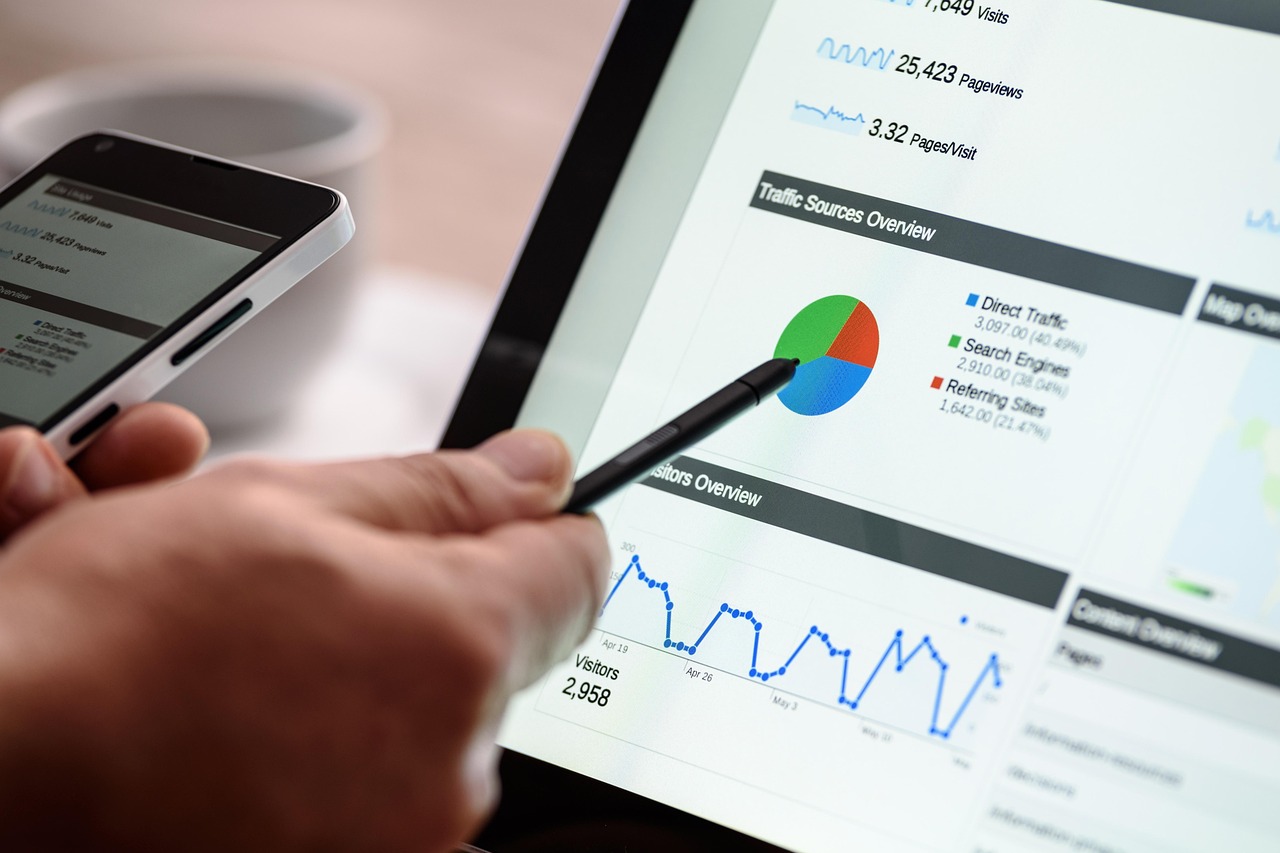

How to Optimize Google PMAX Campaigns for Better ROAS Right Now
How to Optimize Google PMAX Campaigns for Better ROAS Right Now
Staying ahead in the world of Google Performance Max (PMAX) requires sharper tactics than ever before. If you’ve launched PMAX campaigns and want to see a stronger return on ad spend (ROAS), you might be asking: what specific moves can actually make a difference now? Let’s break down proven strategies that go far beyond the obvious, rooted in firsthand experience and the latest in campaign management best practices.
Rethink Campaign Structure for Budget Efficiency
One of the most significant levers in PMAX optimization is structuring your campaigns for efficient data consolidation and budget use. Campaigns with more conversion data feed smarter, faster learning cycles for Google’s AI, so lumping too many asset groups or goals into scattered campaigns can throttle results. Focusing on fewer, higher-volume campaigns usually outpaces a sprawling structure with minimal conversions in each. This isn’t just theory. It’s clear from countless PMAX accounts where consolidating asset groups unlocked improved AI performance, increased conversion counts, and lowered CPA. Google itself recommends aiming for at least 50 conversions per month per campaign, but even hitting the 20-30 mark can make a sizable difference if budgets are limited.
Applying consistent themes to each campaign and asset group helps too. Think about splitting by strategic product categories, promotional events, or best-performing audiences. This prevents the common trap of the AI mixing wildly different goals and signals in one pot. And never lose sight of your overall business objective: is it maximum conversions, higher sales value, or another metric entirely? Matching your campaign goal and bidding strategy to that objective is fundamental to efficiency. And it’s a major ROAS booster.
Guide PMAX Targeting with Audience Signals
Here’s where performance can take a quantum leap: audience signals. These aren’t direct targeting levers, but strong suggestions to Google’s AI about where to begin optimizing. You can. And should. Layer in your finest first-party data, such as customer lists and remarketing segments. High-intent custom segments or lookalikes based on your top converters often yield excellent early results.
Many advertisers find the most success testing a mix of broad and granular audience signals within different asset groups. For example, pairing a wide-reaching in-market audience with a finely segmented list of top spenders directs the AI toward your truest profit centers while leaving space for discovery. Don’t be afraid to get creative or experiment, either. If things stall, try swapping in new affinity audiences or adjusting your customer match parameters. Remember, audience signals act as a compass, not a fence. So the AI will still explore, but your guidance shortens the path to gold.
PMAX also lets you apply these signals on an asset group level, which means extremely tailored groupings and messaging for each high-value audience. Companies who do this well see higher click-through rates and a marked lift in conversion efficiency.
Asset Grouping & Creative Testing. Power Moves Only
Winning asset groups are rarely the result of guesswork or lazy uploads. Your creative assets should not only be high-quality but also tightly themed per asset group. For example, build one group around a bestselling product with matching headlines, descriptions, images, and video. Another might focus on a seasonal offer or distinct service vertical. The secret sauce? Cohesion. Google’s algorithm favors asset groups where all the elements speak directly to one audience or intent.
It’s not enough to meet the minimum requirements. Upload a broad range of visuals. Include branded videos wherever possible (even a 10-15 second general brand video makes a difference). Regularly rotate new creative into asset groups and monitor which combinations the algorithm serves up most often. That’s your signal to double down. Many of the best PMAX marketers set a recurring calendar event to review creative performance, pausing assets stuck at ‘low’ ratings and experimenting with fresh copy and imagery.
Testing isn’t a one-off. It’s a circuit. PMAX now supports asset testing experiments inside a single campaign, making it easier to pit creative versions against each other under the same conditions. Take advantage of this feature to fine-tune your brand’s voice and image in-channel. Over time, campaigns with superior cohesion and continual creative refresh tend to capture more conversions at lower cost. And can often outmaneuver even deep-pocketed competitors.
Demystifying Performance Insights and Reporting
PMAX campaigns offer more diagnostic insight than most advertisers realize. Recent platform updates now allow you to dive deep into channel-level and placement-level reporting, so you can parse performance by YouTube, Search, Display, and more. Do you notice certain channels eating up budget with lackluster results? It’s now possible to spot and adjust accordingly.
Google has rolled out new tools that spotlight asset group effectiveness, individual asset ratings, and search term trends specific to PMAX. Don’t just glance. Analyze these insights each week. Savvy marketers notice what’s working, but also dig into what’s failing. Are your search term themes aligned with your best converting keywords? Is a set of assets being underutilized despite a high rating? These are clues for fine-tuning asset mix, shifting budget, or reconsidering campaign objectives.
My own campaigns have seen tangible ROAS lifts after pivoting strategy based on placement or asset group insights. For instance, slashing spend on poor-performing video placements while channeling budget to high-converting search categories yielded sharper CPA. And impressed a client who was skeptical about PMAX’s transparency.
Manual Overrides: Reclaim Control When AI Isn’t Enough
Google’s push for automation doesn’t mean you have to relinquish full control. Especially when your targets matter most. Manual overrides and new controls empower hands-on advertisers to shape outcomes more precisely. Take negative keyword lists at the campaign level: these are now live, letting you safeguard brand suitability and weed out irrelevant search terms across asset groups.
If your account runs high-ROI Shopping campaigns in tandem with PMAX, careful structuring and robust exclusions (for example, blocking branded queries from PMAX if Standard Shopping outperforms there) keeps budget flowing to the most profitable approach. Fine-tuning location settings, device bid adjustments, or scheduling ads to coincide with peak conversion windows can give you the upper hand in scenarios where the AI model can’t see the nuance.
Sometimes, introducing minimum ROAS thresholds or cost caps can serve as a forcing function, pushing the algorithm to compete at your desired level. My own work with a retail brand’s holiday campaign proved this out: adding a strict ROAS target cut waste from experimental placements and channeled spend toward repeat buyers and proven products.
Final Thoughts: Your Blueprint for Superior PMAX Results
PMAX isn’t a plug-and-play magic box. It thrives with thoughtful, ongoing adjustment. Streamlining your campaign structure, guiding AI with high-quality audience signals, rigorously refining creative, leveraging granular reporting, and stepping in with manual controls when needed can each offer a measurable boost to ROAS.
Advertisers who combine data-driven rigor with creative experimentation consistently see more effective campaigns. And stand out in a competitive market. If you’re determined to realize better PMAX results, there’s no substitute for an active, hands-on approach. Now is the time to revisit your campaigns, test these tactics, and remind yourself: in digital marketing, doing the basics brilliantly is what turns good into exceptional.
Ready to take the next step? Perform an audit of your current PMAX setup, experiment with new audience signals or asset groupings this week, and don’t hesitate to recalibrate where results fall short. Every campaign is an opportunity to learn and iterate your way to better ROAS.
Frequently Asked Questions
What are audience signals in PMAX, and how do they influence targeting?
Audience signals are hints you give Google’s AI regarding the types of users you want the campaign to target. They don’t limit who the ads can reach but steer the system toward your best audiences faster, speeding up learning and improving efficiency.
Should I always consolidate asset groups and campaigns, or is there value in granularity?
While consolidation typically yields better data and learning for AI-driven optimization, there’s a sweet spot. Group assets and campaigns by similar objectives or categories. Too much granularity risks starving groups of data, while too little can muddy the optimization process.
How can I test which creative assets work best in my PMAX campaigns?
Use the built-in asset testing features in PMAX. Regularly rotate new images, headlines, and videos into your asset groups, and monitor performance scores. Pause underperformers and prioritize assets that show higher engagement and conversion rates.
What fixes are available if PMAX automation delivers poor quality conversions?
Lean on manual controls like negative keywords, location targeting, or setting stricter ROAS or CPA goals. You can also adjust your audience signals and restructure campaigns to channel the AI towards segments that yield better conversion quality.
What’s the one mistake most advertisers make with PMAX?
The biggest missed opportunity is setting and forgetting campaigns. PMAX rewards close monitoring and continuous optimization. Review insights often, and make tactical changes instead of waiting for the algorithm to figure it all out for you.







